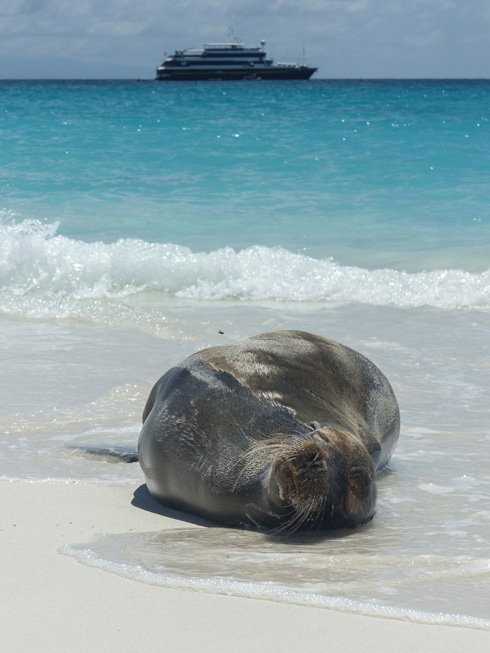In just a couple weeks, I can feel a change in the climate. Instead of flat calm seas at daybreak here in the protected Gardner Bay, there were light waves dancing around the ship. Although it is still hot and humid, it is more comfortable than it has been these past few months. The waved albatross have returned from their peregrinations around the Pacific Ocean over the last three months, and are now residing on their preferred island for the breeding season. Snorkeling was outstanding today, with young sea lions cavorting with the guests on the white sandy beach, and in the turquoise water. A warm afternoon breeze helped to reduce the mosquitoes of Punta Suarez.
- Daily Expedition Reports
- 24 Apr 2017
Isla Española, 4/24/2017, National Geographic Islander
- Aboard the National Geographic Islander
- Galápagos
Cindy Manning, Expedition Leader
Cindy was raised in a family that was fortunate enough to live in many different countries across the globe. During her formative years, she counted Latin America and Europe as home, with periods in-between living in Illinois and Indiana, where she a...
Read MoreShare Report
Related Reports
11/23/2022
Read
National Geographic Islander II
Isabela and Fernandina
Our day began with the chance to point out a lot of interesting geological features as we enjoyed Zodiac tours along a massive flank of Ecuador Volcano on Punta Vicente Roca. In the afternoon, we took a sunny walk on Punta Espinoza on Fernandina Island. We spotted many iguanas, and a bunch of sea lions hanging around, too.
11/22/2022
Read
National Geographic Islander II
North Seymour & Rabida Islands
Relatively small and low compared to neighboring Santa Cruz, North Seymour is located to the north of Baltra. The island is dry with predominantly low shrubs, like prickly pear cacti. The incense trees are bare during the dry season. Seabirds like frigatebirds and blue-footed boobies nest on the island, and sea lions rest on the sand when they are not fishing. Land and marine iguanas also live here. Rabida is in the middle of the archipelago and has a striking red sand beach. We observed a small colony of sea lions of all ages resting or nursing. Behind the beach, American flamingos nest in a brackish lagoon. This island is full of contrasts and wildlife that we enjoyed observing during this day of expedition.







